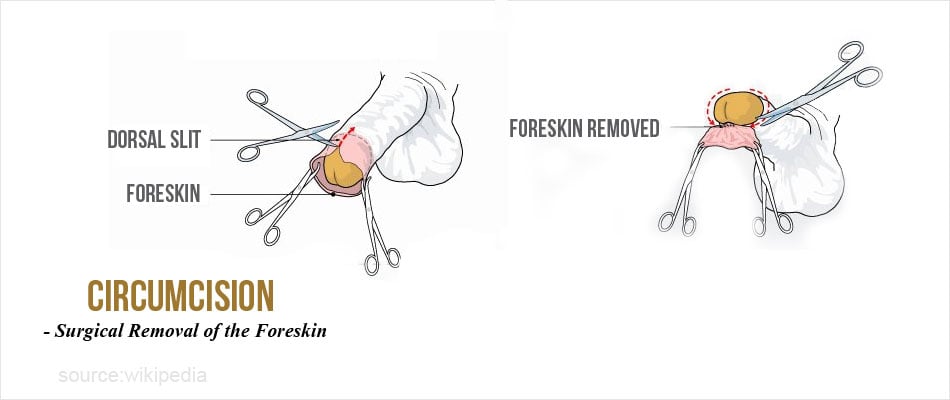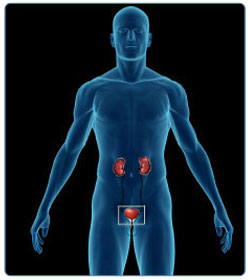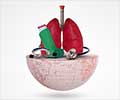How can Phimosis be Treated?
Non-surgical Methods:
If phimosis in older children or adults is not causing acute and severe problems, nonsurgical measures may be effective.
Topical creams:
Phimosis can be treated by the local application (tip of the penis) of topical steroids like betamethasone, mometasone furoate and cortisone. They work by anti-inflammatory and immunosupressive effects.
Topical application of betamethasone 0.2% and hyaluronidase cream on the foreskin of patients with true phimosis caused changes in the structure of the foreskin with a decrease of elastic system fibers compared to non-treated subjects. This is characteristic of the healing processes of the foreskin. (Study conducted in Brazil and published in the journal Urology in 2016). This study supports the use of topical creams for pathological phimosis.
Topical application of 0.05% clobetasol propionate cream was used in 88 prepubertal boys with severe phimosis. This was done with skin stretching techniques. Full retraction of the foreskin occurred in 60 out of the 88 boys. (Study conducted in Korea and published in Korean Journal of Urology in 2013)
Manual stretching:
Stretching of the foreskin can be done with balloons or other tools. This works on the concept that gentle stretching or tension of the skin makes it expand over a period of time and can cause a permanent increase in size. It is a gentle method that can be done even without the aid of a medical doctor.
In this procedure, the preputial opening is widened a bit and a balloon catheter is attached inside. The balloon is inflated till the opening is about 3-5mm more than the maximal diameter of the glans. This inflation is repeated 2-3 times. This is followed by retracting the foreskin several times, on the day of the procedure and also 2-3 times daily after that.
Combination of topical creams and stretching is also effective.
A study that was conducted in Italy in 2005 and published in the Journal of Pediatrics involved 247 boys in the age group of 4 to 14 who used 0.05% betamethasone cream combined with stretching exercises found that it was effective in 86% of the children.
Surgical Methods:
Surgery is performed in cases where conservative treatment fails.
Methods range from the complete removal of the foreskin like in circumcision to more minor operations to relieve foreskin tightness:
Circumcision:
An effective day operation that removes the foreskin covering the penis. It can be performed under a local or general anaethetic.
Circumcision is performed neonatally for religious or prophylactic reasons in certain communities and countries.
Complications of circumcision include pain, bleeding, infection and a decline in sexual pleasure due to loss of erogenous tissue.
The benefits of circumcision include protection against sexually transmitted diseases and penile cancer.

Preputioplasty:
A conservative, alternative treatment in cases where there is narrowing of the preputial orifice. This is a non-traumatic,outpatient procedure using local or general anaesthetics. A short longtitudinal incision is made at the end of the foreskin dorsally. The inner and outer layers of the foreskin are sutured transversely to widen the opening. Other advantages of preputioplasty are
- Less painful
- Faster healing period
- No cosmetic alteration to the penis.
Involves a single incision along the upper length of the foreskin. This, exposes the glans without removing any tissue.
Ventral slit:
An incision along the lower length of the foreskin done when a condition called frenulum breve occurs where the frenulum is too short and restricts the movement of the foreskin. This procedure removes the frenulum in the process.
How do you Care for an Uncircumcised Penis?
Normal cleaning of the penis will suffice for all kids before and after puberty. Excessive washing with soaps is to be avoided.
In infants and younger children the penis should preferably only be washed on the outside without retracting the foreskin.
Teenage boys should be taught to gently retract the foreskin before cleaning the penis and draw it back over the glans after cleaning.
In 2% of adults who have non retractile foreskin, the sterile urine keeps the area clean by flushing out any residual smegma. However, any accumulation of viral carcinogens or tobacco carcinogens in case of smokers can be a risk factor for penile cancer. Treatment options for phimosis can be considered in such cases.
It is essential for doctors and medical professionals to be trained in distinguishing between physiologic and pathologic phimosis. This will avoid unnecessary surgeries. In addition, parents have to be made aware of newer non-surgical methods as an alternative to surgery.









